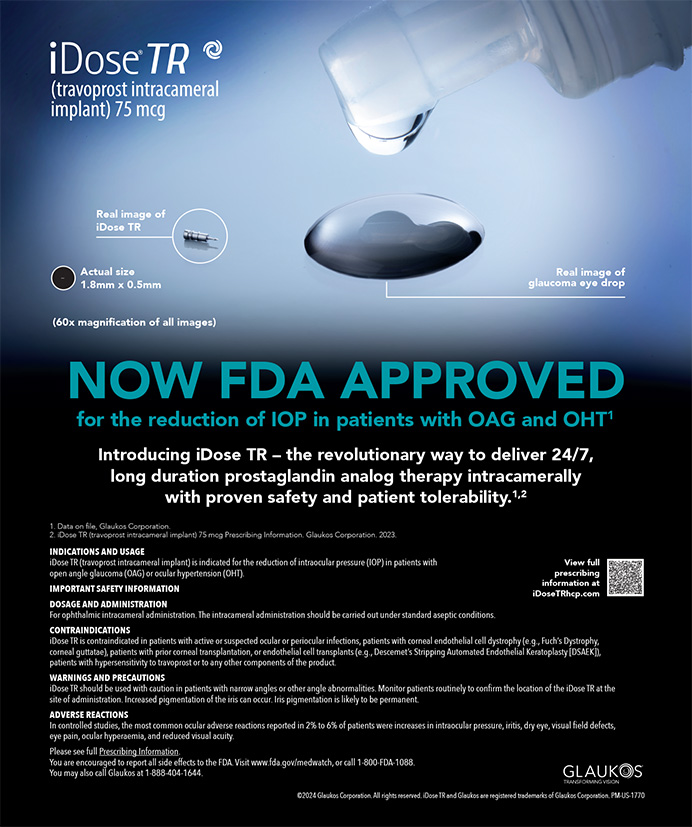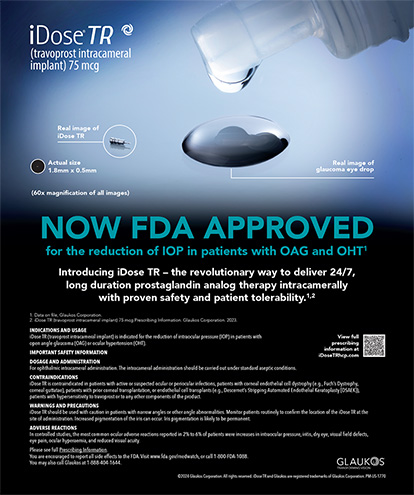
As a surgeon managing a high-volume cataract surgery practice for many years, I have learned that efficiency is not just a goal but a critical element of delivering high-quality care. In this article, I share the strategies that have had the most significant impact on my practice, including block scheduling, continuous staff education, and the integration of advanced technology.
MAXIMIZING EFFICIENCY WITH BLOCK SCHEDULING
In a busy surgical practice, time is one of our most valuable resources. By dedicating specific blocks of time to particular disease states or procedures—such as cataract evaluations or dry eye treatment—my team and I create a focused environment with a unified goal. This concentration reduces the cognitive load on staff, enabling them to become proficient in the specific tasks required for each patient type.
For example, when all cataract evaluations are scheduled during the same block of time, my staff knows exactly which preoperative tests must be performed, what the patient flow will be, and how to ensure that all necessary details are addressed. Block scheduling reduces the risk of errors and helps us provide a consistent and high-quality experience for every patient. Similarly, during a block of dry eye evaluations and treatments, the team knows the exact protocols and steps involved, leading to a more efficient and streamlined process. This improves patient care and reduces stress on the entire team.
THE POWER OF CONTINUOUS STAFF EDUCATION
Efficiency in a high-volume practice is not just about streamlining operations. It also entails ensuring that every member of the team is fully trained and aligned with the practice’s goals. That is why continuous staff education is a cornerstone of my practice. I make regular education and reeducation of my staff a priority so that they can communicate with patients using the same language and approach that I would. This is particularly important when discussing complex options such as premium lenses and their associated compromises.
When our practice adopts a new technology or updates a protocol, the entire team is briefed and trained to integrate these changes seamlessly into their workflow. This consistency ensures that every patient interaction, from the initial consultation to postoperative visits, upholds our high standards. Regular training sessions also help us address inevitable staffing changes, whether due to new hires or internal rotations. Keeping everyone informed allows us to maintain high levels of care and efficiency as our practice evolves.
LEVERAGING TECHNOLOGY FOR SEAMLESS WORKFLOW
In a fast-paced environment, technology can be a true game changer—when used effectively. In my practice, we have integrated advanced tools that have dramatically improved our workflow.
Surgical Planning Software
We use a software solution for surgical planning and data management, Veracity (Carl Zeiss Meditec), which pulls preoperative data from various diagnostic devices such as the IOLMaster 700 (Carl Zeiss Meditec) and Pentacam (Oculus Optikgeräte), gives us easy access to surgical plans, and makes updating them easy. This integration greatly reduces manual data entry, minimizes errors, and saves valuable time for both the staff and me. (Editors’ note: For more on advanced technologies for surgical planning, see “Efficiency Through Advanced Software Solutions.”)
One of the greatest benefits of integrating technology into our practice has been the ease with which we can monitor and analyze postoperative outcomes. By setting specific parameters—such as visual acuity 4 weeks after surgery—we can quickly assess patient progress and make data-driven decisions that enhance both efficiency and patient care.
If we find that a particular type of lens consistently yields excellent outcomes, we can share this information with other surgeons within our practice or across multiple locations. Conversely, when outcomes fall short of expectations, we can identify these issues early and take corrective action. This data-driven approach not only improves the quality of care we provide but also strengthens our ability to participate in clinical research and contribute to the broader field of ophthalmology.
Intraoperative Efficiency
The Ally Adaptive Cataract Treatment System (Lensar) has improved our intraoperative efficiency. In our experience, the IntelliAxis feature on the Ally system has been the most efficient tool for toric lens orientation. The precise alignment marks have allowed us to eliminate additional intraoperative steps, improve the accuracy of lens placement, and reduce surgical time. The removal of preoperative marking has also enhanced the patient experience and saved time on the day of surgery.
FUTURE TECHNOLOGIES
Accommodating IOLs
As I continue to seek ways to improve efficiency and patient care, I am particularly excited about the development of truly accommodative lenses. These lenses have the potential to simplify the surgical decision-making process by reducing the need for compromises, enabling me to offer patients a more straightforward and effective solution for their visual needs. (Editor’s note: Click here to read “Update on Accommodating IOLs” in CRST’s August cover series.)
Robotics
Advances in robotics for cataract surgery have the potential to revolutionize the field. By automating more surgical steps with unprecedented precision, robotics could enable surgeons to focus on supervising the procedure rather than manually performing each task. This shift could increase efficiency and help meet the growing demand for cataract surgery, especially as the ophthalmology workforce remains relatively static.
CONCLUSION
Embracing strategies such as block scheduling, continuous staff education, and advanced technology integration has helped my practice streamline operations, reduce errors, and improve patient outcomes. I am confident that the ongoing evolution of technology and surgical technique will present even more opportunities to optimize workflow and deliver exceptional patient care. I look forward to seeing how these innovations will shape the future of cataract surgery.




